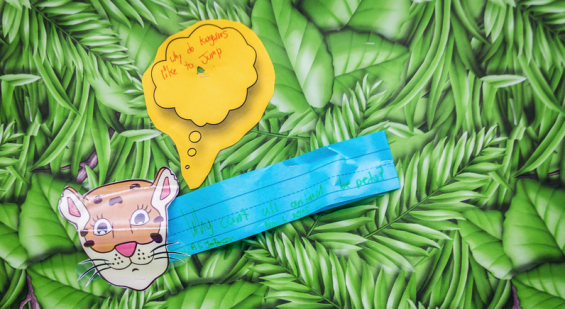
Inside the animator’s studio: Creating universes and (literally) shattering the Earth
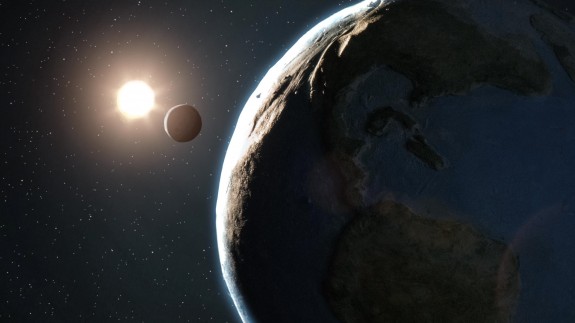
If you haven’t seen the TED-Ed Lesson “A rare, spectacular total eclipse of the sun,” you should really check it out. Not only will you learn a good deal about the science behind these extraordinary events, you’ll also get to soak in some beautiful and detailed artistry from accomplished animator Bevan Lynch. We caught up with Lynch for a quick, behind-the-scenes look at what it was like to create an entire universe from scratch (with a few Earth-shattering pitfalls along the way).
How do you come up with the ideas for your animations?
Pre-production for me is often the most fun and also the most challenging part of the animation process because there are so many fun choices to make, but knowing which are the right ones can be tough.
Visual ideas come to me in many different ways. Sometimes I’ll read a script and know exactly how I want to represent it. If inspiration doesn’t come to me right away, I like to gather together and watch every film I can think of in a similar or relevant subject and have a massive late night movie marathon. That usually does the trick. Knowing that I have landed on the right idea is another matter. I know what I like, but people often have very different aesthetic tastes. So, after interpreting the initial brief as best I can, I tend to rely on gut instinct in conjunction with constructive criticism from other key creatives on the project.
I usually try to start a conversation about the visual treatment of an animation by creating several “style frames” or mockups of what a final frame might look like in a variety of visual styles. For the solar eclipse lesson, I created three very different visual looks to choose from (see below).
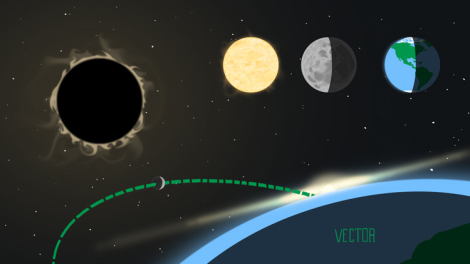
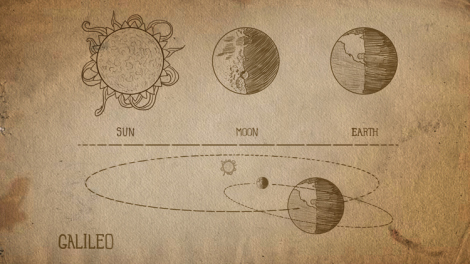
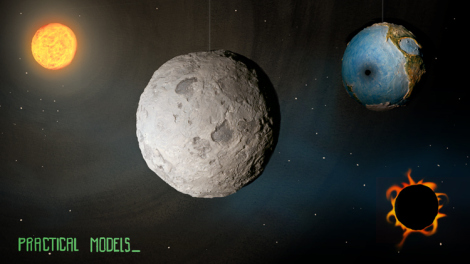
The first two looks required only digital painting to achieve. The last look — the one we ultimately chose for the final animation — required the creation of physical models of the Earth and Moon and the filming of smoke elements for the Sun’s corona. This practical look seemed to get people making happy noises, and I really liked the kitsch, 50s B movie sci-fi feel of it, so I went with that.
How did you build the models?
The models I created for the style frames were plaster of Paris painted over a polystyrene ball and then details were sculpted and painted on top. Each one took about a day to make. Unfortunately, the second I took the photo of the Earth, the wind blew it over, and it smashed all over the floor.
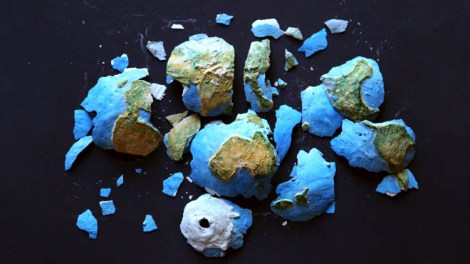
I set about making a new Earth, a better Earth, an Earth sculpted in Plasticine, molded in silicone and cast in UltraCal (a very hard-wearing plaster). And I had the mold, so if I dropped this one, I could easily make another! This second Earth took almost 4 days to make. The loss of the first model was definitely the biggest challenge I encountered in this lesson. Not only did it set me back almost a week in the schedule, but it was utterly demoralizing to see it smash all over the ground. Although, it did make for a good photograph.
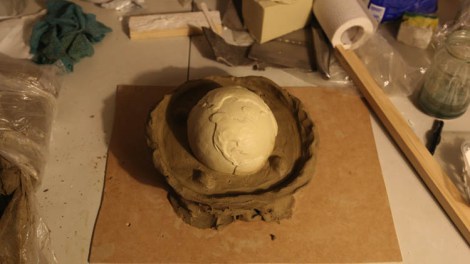
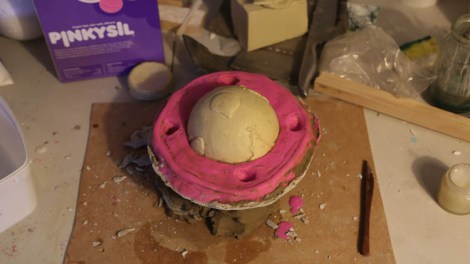
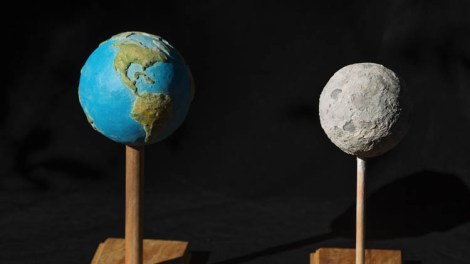
I shot the models in several different lighting conditions depending on the shot, including a flat lit version that could be post lit for shots where the light needed to change over time. The photos were cleaned up in Photoshop and the elements composited in After Effects.
Did you know much about solar eclipses before you started working on the lesson? Learn anything fun?
I knew a fair bit about solar eclipses before starting this lesson, but what I didn’t realize was that the corona is only going to be visible to us on Earth for a certain amount of time, and then eclipses will never look the same again. I find that a bit sad, but also very lucky that we haven’t already missed it!
Check out our “How Atoms Bond” and “What is the shape of a molecule?” lessons for more of Bevan’s spectacular animations.

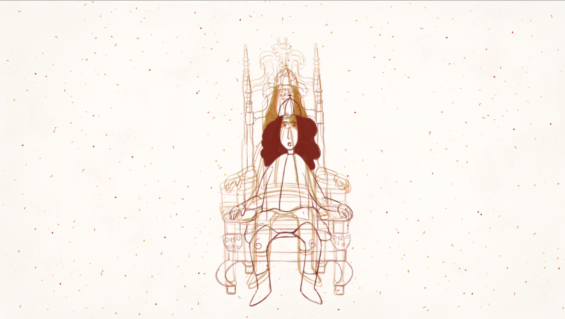


Wow. Great job, I loved the video.